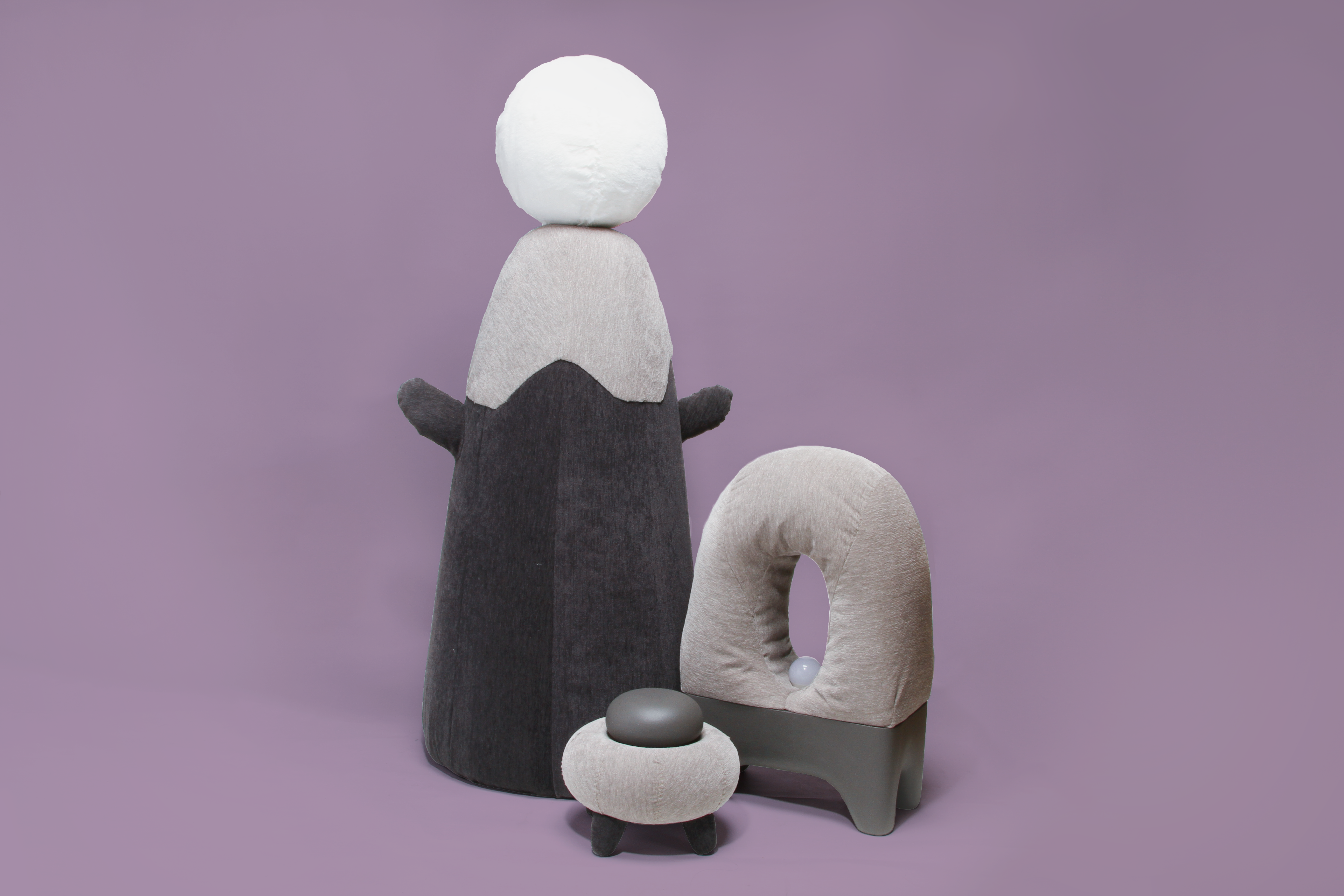Business Innovation & Strategy
Building the Future of Assessment
Minecraft Education’s Learning Revolution
Overview
Microsoft Minecraft isn’t just the world’s leading sandbox game—it’s a global canvas for possibility. As the first of its kind to invite players to build, explore, and survive using simple blocks, it has fundamentally changed the meaning of creativity and collaboration. Minecraft Education pushes this vision even further, equipping educators with dynamic tools and resources to unlock inclusive, playful learning for millions of students.
With a team of 6 business innovators, we led a comprehensive strategic initiative for Microsoft Minecraft Education team on investigating and prototyping novel AI-driven assessment methods.
My role as the strategists and experiential direction led three sprints within a 10-week timeline.
Microsoft Minecraft isn’t just the world’s leading sandbox game—it’s a global canvas for possibility. As the first of its kind to invite players to build, explore, and survive using simple blocks, it has fundamentally changed the meaning of creativity and collaboration. Minecraft Education pushes this vision even further, equipping educators with dynamic tools and resources to unlock inclusive, playful learning for millions of students.
With a team of 6 business innovators, we led a comprehensive strategic initiative for Microsoft Minecraft Education team on investigating and prototyping novel AI-driven assessment methods.
My role as the strategists and experiential direction led three sprints within a 10-week timeline.

Exploring the AI literacy Gap
Educational institutes are trusted to teach our next generation the skillsets and knowledge that they need for building a better future for all. Today, the surge of AI in our daily lives has swayed the equilibrium of this magnitude ever since the introduction of calculators in a math classroom. While parents and administrators expect educators to shape “AI-ready” futures, only 24% of the educators report meaningful integration (utilize them to create or update lesson plans, assignments), and even fewer adopt them to truly address students'needs.
Educational institutes are trusted to teach our next generation the skillsets and knowledge that they need for building a better future for all. Today, the surge of AI in our daily lives has swayed the equilibrium of this magnitude ever since the introduction of calculators in a math classroom. While parents and administrators expect educators to shape “AI-ready” futures, only 24% of the educators report meaningful integration (utilize them to create or update lesson plans, assignments), and even fewer adopt them to truly address students'needs.
How can we nurture authentic learning when students now wield powerful AI, and how can we partner with AI to drive something more than standard text book?
How are AI being used in education today?
![]() What are the Main Concerns about AI in education?
What are the Main Concerns about AI in education? ![]()
 What are the Main Concerns about AI in education?
What are the Main Concerns about AI in education? 
Is personalization enough?
Our initial focus was pragmatic: alleviate educators’ pain points. We dug into their daily realities, how they grade assignments depending on their subjects, how they deal with administrative tasks, and the relentless race to keep up with student ingenuity. The natural answer seems to be better personalization that is tailored towards each journey.
But, as we talk to more K-12 educators, something else emerged: teachers yearned not just for knowledge transfer, but for ways to grow the skills that don’t live on transcripts—creativity, collaboration, empathy. They feared that the blind spots in digital learning would overshadow these crucial, human outcomes.
Our initial focus was pragmatic: alleviate educators’ pain points. We dug into their daily realities, how they grade assignments depending on their subjects, how they deal with administrative tasks, and the relentless race to keep up with student ingenuity. The natural answer seems to be better personalization that is tailored towards each journey.
But, as we talk to more K-12 educators, something else emerged: teachers yearned not just for knowledge transfer, but for ways to grow the skills that don’t live on transcripts—creativity, collaboration, empathy. They feared that the blind spots in digital learning would overshadow these crucial, human outcomes.
“There has always been the temptation of building a ‘better, smarter’ digital test. “Instead of building a smarter test,” we challenged ourselves while thinking about our own education journey from multiple countries and cultural backgrounds, “why not ask—What is a test for? Is it for sorting students, or for igniting discovery?”
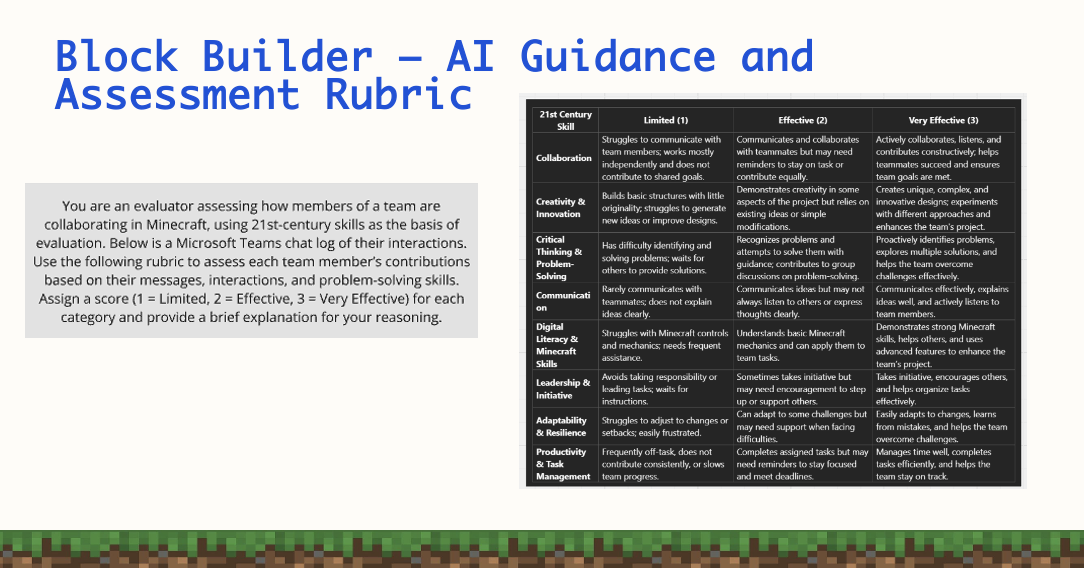
Learning Beyond Scores
Our first design cycles channeled these insights. Yes, we envisioned adaptive learning modules and vivid dashboards—tools that showcased not only grades, but grit and growth. Teachers craved the power to recognize small wins and hidden talents, not just top performers. With each prototype, we sought to answer: how might technology illuminate creativity and perseverance—skills no robot can fake?
We imagined teacher-friendly insights, progress visualizations, and new ways to curate enriching, individualized journeys for every student.
Our first design cycles channeled these insights. Yes, we envisioned adaptive learning modules and vivid dashboards—tools that showcased not only grades, but grit and growth. Teachers craved the power to recognize small wins and hidden talents, not just top performers. With each prototype, we sought to answer: how might technology illuminate creativity and perseverance—skills no robot can fake?
We imagined teacher-friendly insights, progress visualizations, and new ways to curate enriching, individualized journeys for every student.
Rough Mockups of First Iteration


What are the games for? Play!
In sharing our early concepts, educators responded with excitement, drawn to the novelty and engagement of gamified dashboards. But one bit of feedback cut through the noise:
We realized our work risked missing Minecraft’s essence. The heart of any game, especially Minecraft Education, is self-efficacy: how youth discover, struggle, persist, and find purpose together. Games, at their best, are not distractions—but incubators of the very skills our world most desperately needs. It is a perfectly fail safe world that tolerates mistakes, failures, and allows you to try different combinations to a point that you decide which ones are the one that you believe the most in.
In sharing our early concepts, educators responded with excitement, drawn to the novelty and engagement of gamified dashboards. But one bit of feedback cut through the noise:
“Students get excited about games—they don’t feel like tests. It makes the experience collaborative and engaging.”
We realized our work risked missing Minecraft’s essence. The heart of any game, especially Minecraft Education, is self-efficacy: how youth discover, struggle, persist, and find purpose together. Games, at their best, are not distractions—but incubators of the very skills our world most desperately needs. It is a perfectly fail safe world that tolerates mistakes, failures, and allows you to try different combinations to a point that you decide which ones are the one that you believe the most in.
New Educational Storyline Walkthrough with Renderings (scroll left & right)

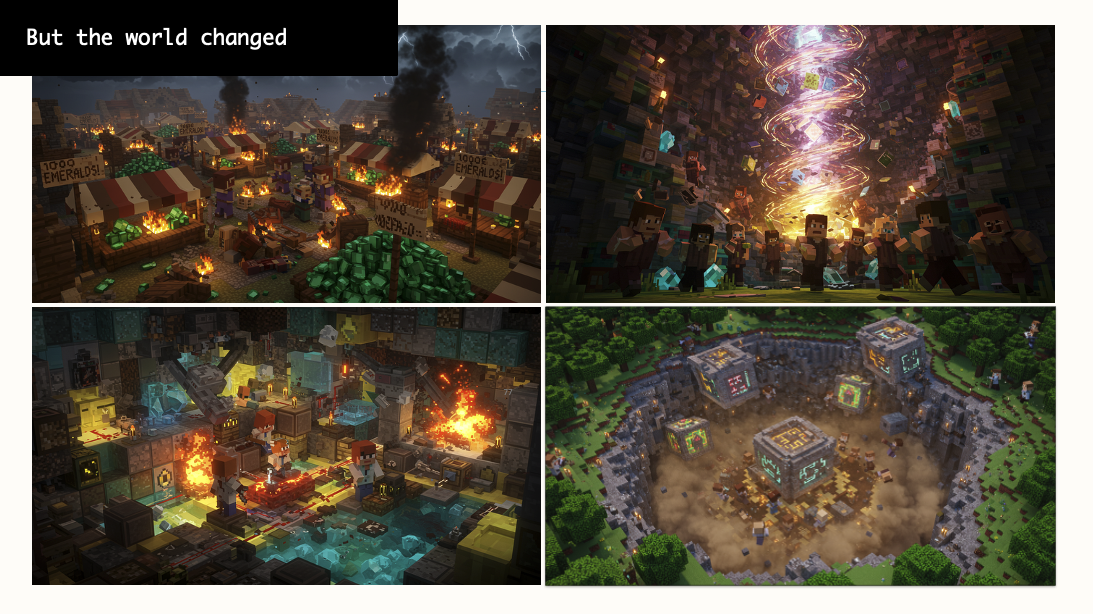
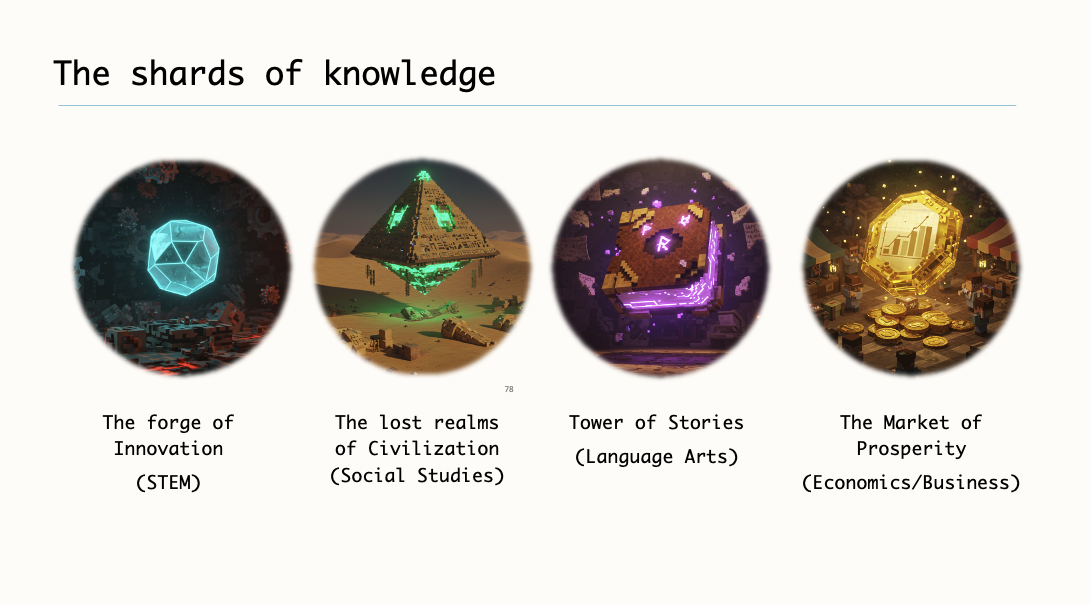


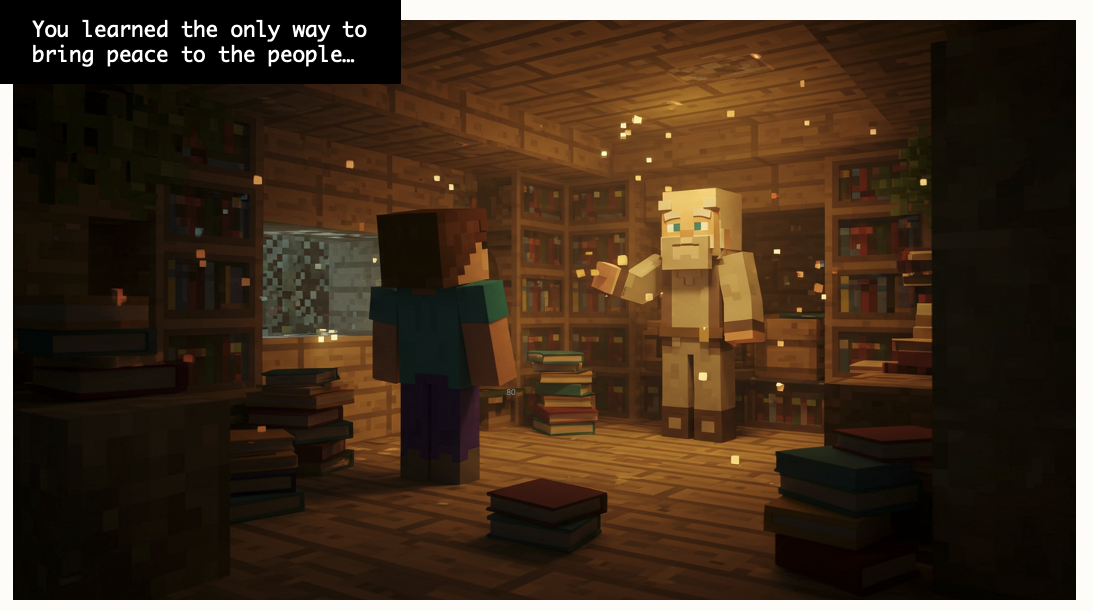

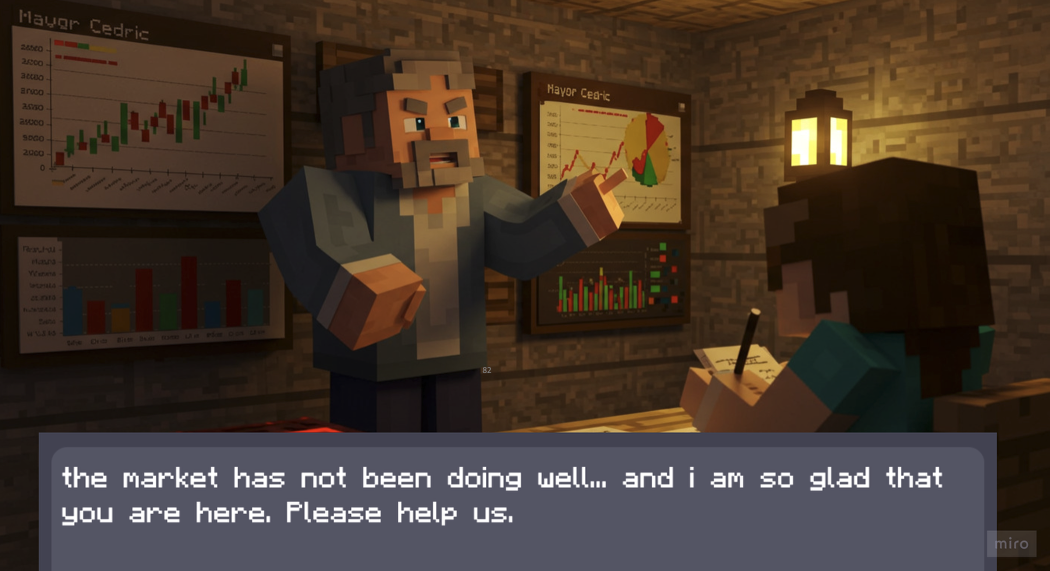





Distractions? I think exploration!
Too often, games are the usual suspects for distraction or worry in education. But our research told a different story. What some saw as off-task wandering was, in reality, curiosity unleashed—players serendipitously finding new resources, learning rules by breaking them, stumbling together toward discovery. This sort of “productive play” surfaces insights and lessons tests simply can’t. And Minecraft education is built upon mechanisms like this, with infinite combinations of world combinations to discover, to wander in, to find new materials.
During team playtests, we watched ourselves grow—learning from each defeat, strategizing better, and, above all, trusting our teammates more with every challenge. It was in these moments that resilience and collaboration emerged—precisely the qualities both teachers and future employers hunger for. We were surprised how much longer we chatted with each other after every play.
Too often, games are the usual suspects for distraction or worry in education. But our research told a different story. What some saw as off-task wandering was, in reality, curiosity unleashed—players serendipitously finding new resources, learning rules by breaking them, stumbling together toward discovery. This sort of “productive play” surfaces insights and lessons tests simply can’t. And Minecraft education is built upon mechanisms like this, with infinite combinations of world combinations to discover, to wander in, to find new materials.
During team playtests, we watched ourselves grow—learning from each defeat, strategizing better, and, above all, trusting our teammates more with every challenge. It was in these moments that resilience and collaboration emerged—precisely the qualities both teachers and future employers hunger for. We were surprised how much longer we chatted with each other after every play.
Play Surfaces that Tests Cannot
Minecraft Education wasn’t just a digital toy, but it is a canvas where real learning came alive. We were inspired how close to real-life the in-game physics and mechanics can be, and that is exactly what the teachers have been looking for. This pivot allowed us to find the question better to “how might we build an environment that is breaking the barrier between educators and students, and fostering self-efficacy”
According to a LinkedIn Future of Work Report, 92% of US executives agree that people skills are more important than ever, and parents and educators could not agree more. Communication, creative problem solving, professional ethics, and social perceptiveness are all part of the foundation that is outside of the technical skills that we are all required to hone. And the take away is that educators need to develop a new mix of skills to prepare students for future careers.
Minecraft Education wasn’t just a digital toy, but it is a canvas where real learning came alive. We were inspired how close to real-life the in-game physics and mechanics can be, and that is exactly what the teachers have been looking for. This pivot allowed us to find the question better to “how might we build an environment that is breaking the barrier between educators and students, and fostering self-efficacy”
According to a LinkedIn Future of Work Report, 92% of US executives agree that people skills are more important than ever, and parents and educators could not agree more. Communication, creative problem solving, professional ethics, and social perceptiveness are all part of the foundation that is outside of the technical skills that we are all required to hone. And the take away is that educators need to develop a new mix of skills to prepare students for future careers.

Celebrate the Educators
In our iterative cycles, we built prototypes enabling teachers to orchestrate collaborative quests, inside and outside traditional subjects.
AI now quietly tracked not just the “right answers,” but the cascade of choices, conversations, and moments where students lifted each other up. After each adventure, a storytelling “reel” revealed not scores, but moments—and laughter—of learning and growth.
And along with it, educators can now facilitate games to foster curiosity, create peer learning that no worksheet could rival.
The reel not only gathered their major decision moments, but also moments that could be easily overlooked or forgotten throughout the 30-minute game play. But these moments marked all that is precious about human interaction, it could just be one tone, or attitude that totally changes your viewpoint.
View Demo Video link here!
In our iterative cycles, we built prototypes enabling teachers to orchestrate collaborative quests, inside and outside traditional subjects.
AI now quietly tracked not just the “right answers,” but the cascade of choices, conversations, and moments where students lifted each other up. After each adventure, a storytelling “reel” revealed not scores, but moments—and laughter—of learning and growth.
And along with it, educators can now facilitate games to foster curiosity, create peer learning that no worksheet could rival.
And our favorite pilot test is we asked two teachers who have never played the game ever before to partner together, to bravely try it out. They “failed” spectacularly, dying in the game in different ways over and over again, but they laughed, tried new tactics, and supported one another. When the final report replayed their journey, we were glad to hear them say “we definitely did not win, but I learned. And seeing this reflection, I am very impressed.”
The reel not only gathered their major decision moments, but also moments that could be easily overlooked or forgotten throughout the 30-minute game play. But these moments marked all that is precious about human interaction, it could just be one tone, or attitude that totally changes your viewpoint.
View Demo Video link here!

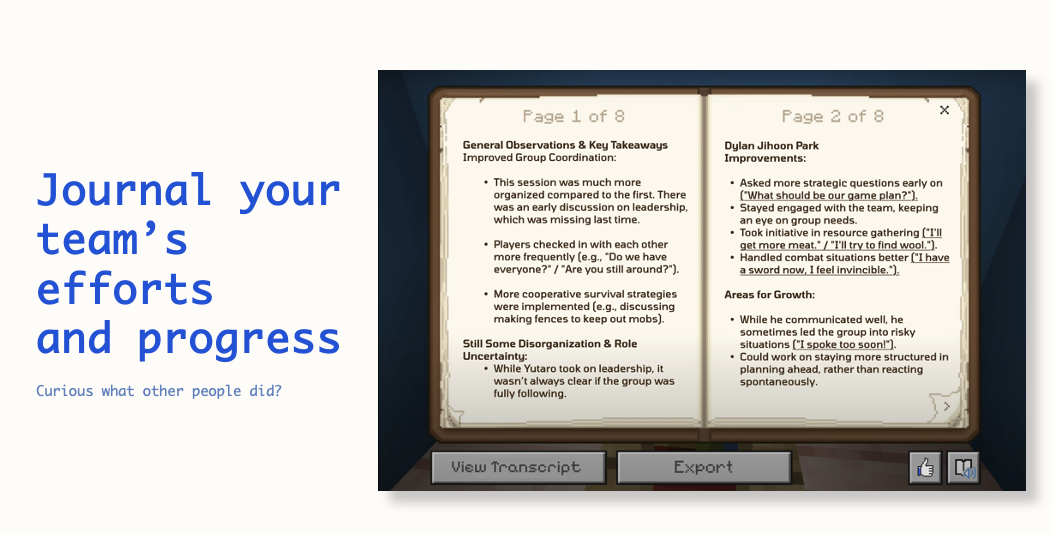
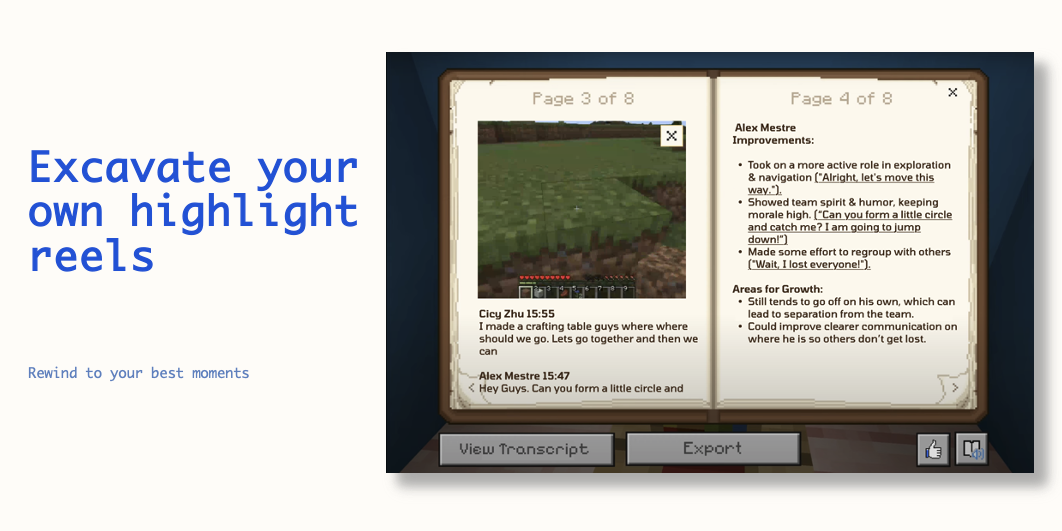
New Pathways into a Braver Future
The future of assessment is never about making tests harder or surveillance deeper. It is surfacing the moments of growth, in worlds that students love, that is building on top of the school knowledge that students are already learning in the classroom.
With the right strategy, AI will be the lens that magnifies learning’s true value. Our most profound result wasn't just market acceptance; it was hearing the teachers that we worked with say:
When we find a strategy that builds upon trust, reflection, and connection, education assessment goes beyond measurement.
The future of assessment is never about making tests harder or surveillance deeper. It is surfacing the moments of growth, in worlds that students love, that is building on top of the school knowledge that students are already learning in the classroom.
With the right strategy, AI will be the lens that magnifies learning’s true value. Our most profound result wasn't just market acceptance; it was hearing the teachers that we worked with say:
“Now, I can show parents and students evidence of learning that I always believed was there, far beyond the text books.”
When we find a strategy that builds upon trust, reflection, and connection, education assessment goes beyond measurement.
See more:

